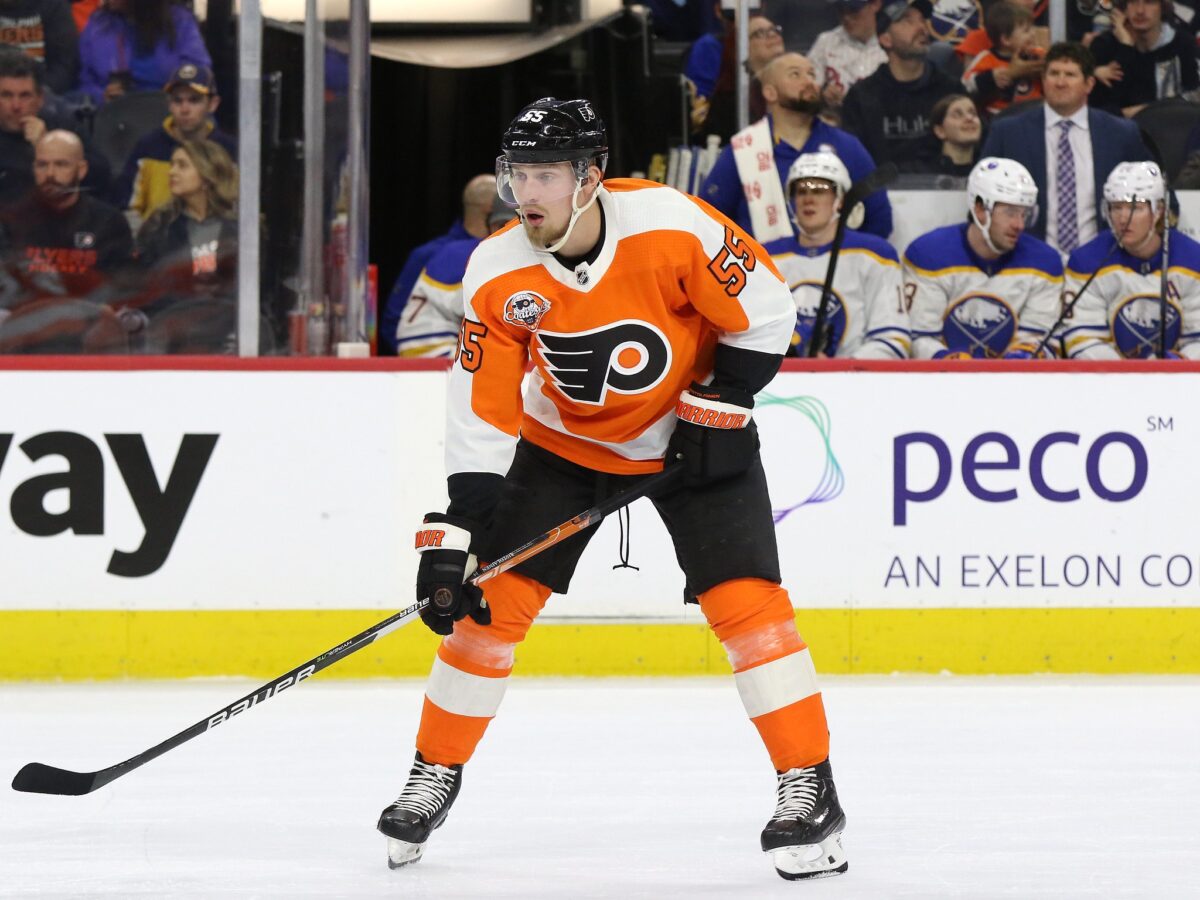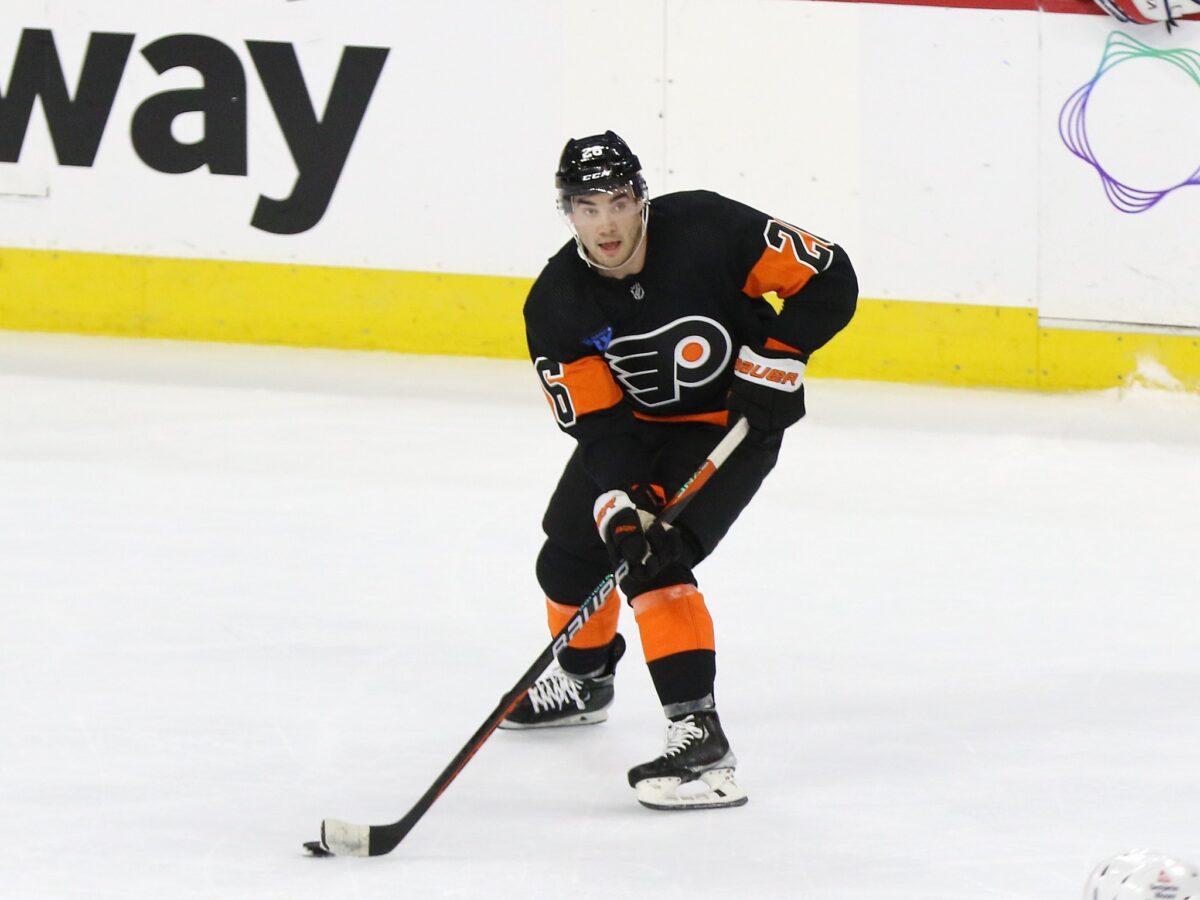There’s a chance the Philadelphia Flyers have already made the biggest trade of 2024, not just for themselves but for the entire NHL landscape. Trading Cutter Gauthier, a No. 5 overall pick lighting up college hockey and World Juniors, to the Anaheim Ducks for another highly-skilled former top-10 pick in Jamie Drysdale (plus a 2025 second-round pick) is a true blockbuster. Gauthier was considered a massive piece of the Flyers’ long-term future, more important to the success of the team’s rebuild than arguably anyone outside of Matvei Michkov. Then, in the blink of an eye, he was gone.
A lot has been written about the trade itself and whether the Flyers got fair value for Gauthier. The same for if the organization’s unified message attacking Gauthier’s unwillingness to not just sign with the team but even meet with them since May was a step forward or a bridge too far. All of that is important, but it’s also overshadowed the impact of adding Drysdale to the team’s roster. Part of that may be due to Drysdale missing the team’s last two games with an illness. But integrating such a skilled player at a position of strength for the Flyers this season opens up a world of possibilities, even if that wasn’t the goal of trading Gauthier.
“The team has been outstanding and how hard they’ve played for one another,” Flyers president of hockey operations Keith Jones told NBC Sports Philadelphia. “That didn’t really play into this [trade]. This was a situation that was kinda thrown at us. And we had to react appropriately. But that was not based upon how the team has played this year.”
That may be so, but that’s what wound up happening. The Flyers were very comfortable with their six-man unit on defense before adding Drysdale. In his first two games in Philadelphia, the Flyers opted to go with seven defensemen rather than scratching one of their blueliners. While things may remain somewhat status quo, for now, how the Flyers handle the March 8 trade deadline could be much different now that Drysdale’s in the fold.
Who Could Be On the Move?
Of the eight defensemen currently on the Flyers’ roster, four are under contract next season. Drysdale, Travis Sanheim and Cam York aren’t going anywhere. Rasmus Ristolainen’s name has popped up in some trade rumors, although it’s unclear how much of a hindrance his $5.1 million cap hit through 2027. It’s possible the Flyers trade him, but not probable. Egor Zamula isn’t signed for next season, but he’s a restricted free agent who won’t break the bank and looks like a solid third-pair defenseman. It’s even more unlikely he’s traded before the end of this season than Ristolainen.

That leaves three, all pending unrestricted free agents: Sean Walker, Nick Seeler and Marc Staal. Walker is almost certainly the most valuable of the three. The 29-year-old has been outstanding in his first year with the Flyers, scoring at a career-high rate while playing the most ice time per game (20:05) of his career. He’s been in Philadelphia’s top four all season long and, like Drysdale, he’s a right-handed shot. Of the three, he’s also the most stylistically similar to Drysdale, as Walker loves to jump up in the play and is a good skater.
Seeler has been a lineup regular for the Flyers over the last three seasons and has sustained his solid play from 2022-23 this season. A classic defensive defenseman who blocks countless shots and is a key cog in the Flyers’ outstanding penalty kill, the 30-year-old also carries a dirt-cheap $775,000 cap hit. Staal has only played in 17 games this season, partially due to injury, but he’s also been frequently healthy scratched. The Flyers wouldn’t be losing much if they traded Staal, at least in theory, although you never know when injuries might strike.
Do the Flyers Need to Make a Trade?
It makes sense to move someone for a few reasons. Let’s ignore Staal for a second since he’s not playing much, likely wouldn’t fetch much in a trade and, at 37 years old, is not a long-term fit. Re-signing Walker and Seeler could be risky if both demand medium to long-term contracts. Both are nearing the end of their primes, and such deals could risk blocking youngsters such as Emil Andrae, Ronnie Attard and (looking farther down the line) Oliver Bonk. Additionally, both players could probably garner solid returns. A second-round pick feels plausible for both, especially Walker.
So, which does it make sense to trade? If you think the best move is to keep the blue line as close to it was before the trade, then it’s Walker. The Flyers’ top-four right side seems set for the near future in Drysdale and Ristolainen. Signing Walker would limit flexibility there, which could be problematic given the aforementioned young players and that Sanheim thrived early this season when playing on the right. A Walker contract all but eliminates that option.

However, if you want the defense to be as strong as possible this season, Walker is probably the better all-around player. The offensive gap between Walker and Seeler is bigger than the defensive gap between the two. Walker can do the defensive things Seeler can, but he just doesn’t do them as well. Seeler is nearly as skilled with the puck or aggressive offensively as Walker. Trading Seeler would also give the Flyers three lefties (Sanheim, York, Zamula) and righties (Ristolainen, Drysdale, Walker).
Related: Flyers Still Streaking After 4-2 Win vs. Blues
If the Flyers were to trade Ristolainen, either at the deadline or in the offseason, that could change things. If that isn’t in the plans, though, the Flyers need to make a call. Determine what attributes are most important to you for this season and who fits better going forward to begin clearing space for the kids and recoup a nice asset or two along the way. It’s not an easy decision to make, but these are the tough calls teams have to make.
